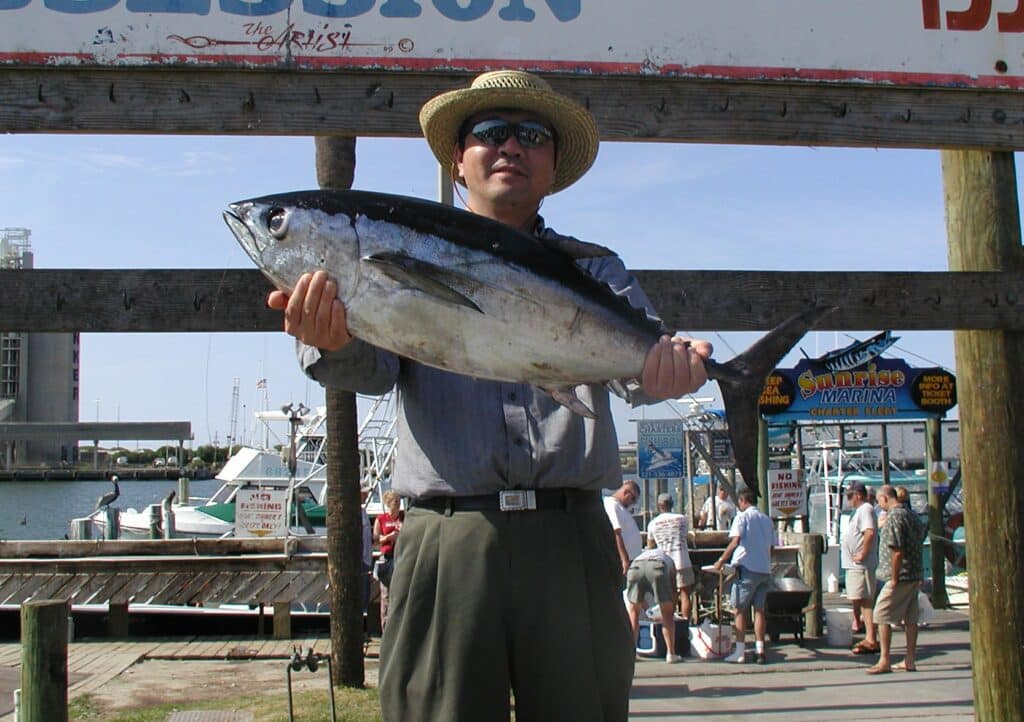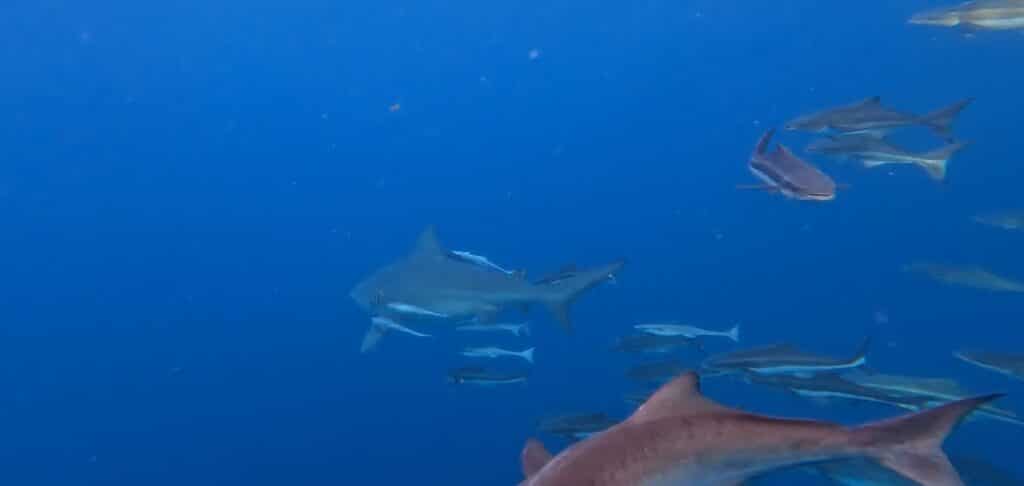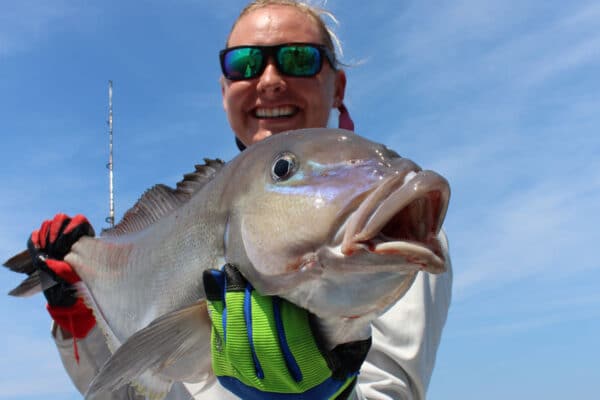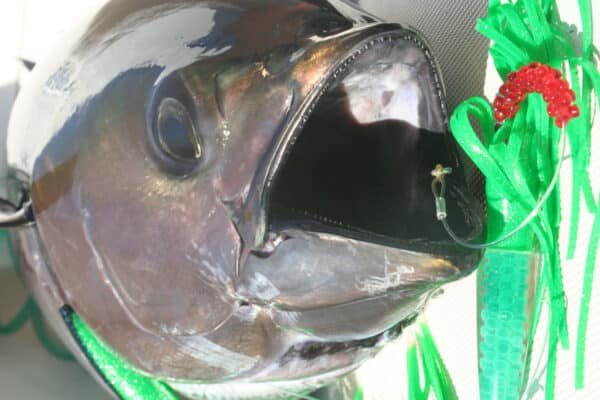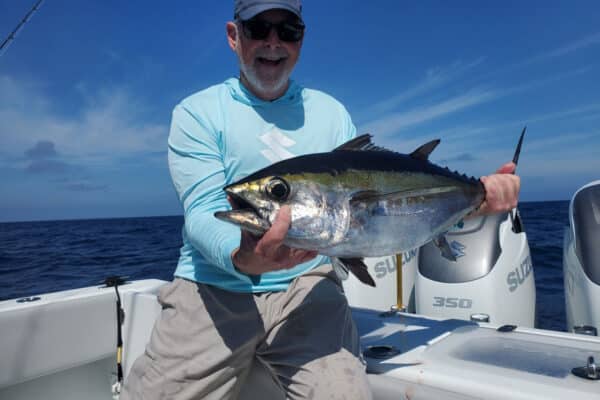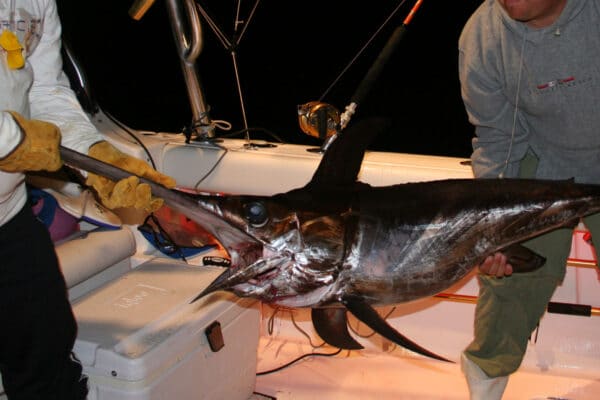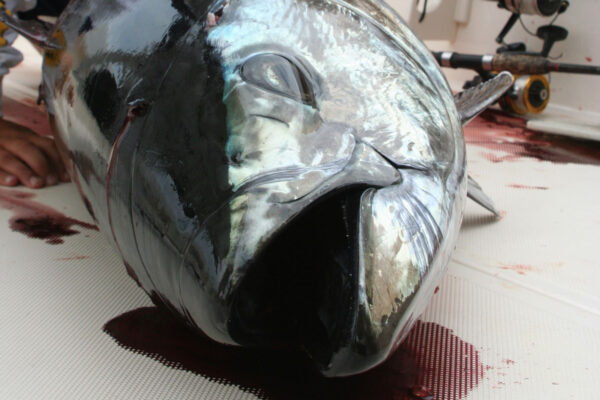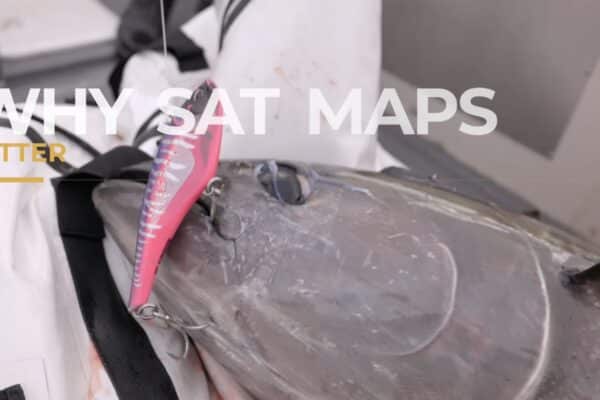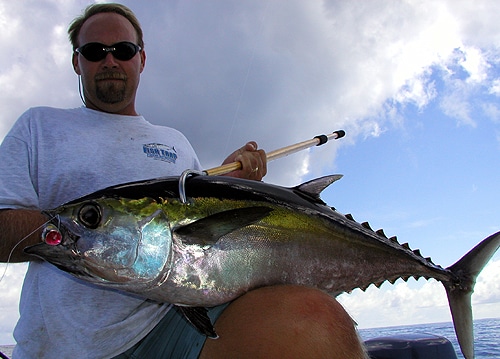
In the past, we used to have a saying that blackfin were throw-backs in the summer while fishing for yellowfin, but come fall, they became delicious and a target when the yellowfin had come and gone. Now that yellowfins have become harder to catch, the blackfin tuna have climbed a few notches on the scale of desire.
Let me talk about the past again for a moment and how blackfin fishing has changed dramatically over the years here in Central Florida. Starting in late August and continuing through fall and part of winter, blackfin tuna fishing was a highlight and often an epic start to the day before we began trolling the rest of the day. The key to the whole fishery was the arrival of the shrimp boat fleet that worked our waters for rock shrimp at night in 140 to 180 feet. After dragging all night and stacking up a pile of their haul on the deck, the boats would anchor up and sort their catch at first light. The crew would separate the shrimp and squid from the enormous amount of bycatch consisting of croakers, soles, lizardfish, crabs, and so many more. Sad to see in some ways, but key to the feeding frenzy that was about to take place behind the boats. Often, a barter system was welcomed where beer or cigarettes were exchanged for sacks of this by-catch, and we used it for chum and bait. We would begin to chum ourselves, first a burst and then a steady trickle, trying to pull the school of fish with us as we drifted away from the shrimper. Bonita or little tunny were always on the scene and incredibly fast at scarfing up anything that hit the water.

Somewhere below we hoped, were the blackfin tuna, often 15 to 30 pounds, waiting to join the feed. We would feed and watch, catching a couple of bonita for practice and to use as bait themselves. One trick was to use a bonita chunk for bait, as the other bonita tended to avoid it long enough for a blackfin to gobble it. It didn’t always work, but it certainly was a tried-and-true tactic. All the while, we are trickling dead fish from the chum sack and setting aside the larger soles, lizardfish, and other assorted casualties of shrimping. These were prime baits for when the blackfin began to make their move. Bonita streaking through the chum looks green, but suddenly the explosions would have a dark black streak blaze up and back down. This was the cue to start fishing with the bigger baits we had set aside.
A 50-pound leader and a 6/0 to 7/0 short-shank hook were hidden in the bait, making sure the point was exposed. A couple of freebies were thrown to camouflage the business one, and hope the tuna beat the bonita to the offering. It was awesome when the explosion on your bait was black. A few seconds of blazing free spool and click, the fight was on with blistering runs down and out. Another trick was to throw topwater plugs on the outskirts of the feeding frenzy and watch them get blasted. Now we were catching bonita too, but turning them into bloody chunks, descending to the waiting tuna. Every so often, the blackfins would get so fired up that they would push off the bonita and be boiling on every bait that hit the water. These were the good ole days!
Unfortunately, times have changed, and twenty-five years later, the shrimp fleet has been sold off or moved on for lack of dockage and facilities in Port Canaveral. A very few local boats still ply the waters, but the frenzy behind them has dramatically changed. The keyword now is sharks! The entire East Coast of Florida is experiencing a shark population explosion like no one has ever seen. They are eating bottom anglers’ groupers, snappers, and jacks as well as mowing down the quarry of South Florida’s sailfish fleet. It is out of hand. We used to deal with a handful of sharks behind the shrimpers, and believe me, they loved a bonita chunk too. We would lose a tuna now and again to a shark attack, but nothing could prepare us for modern times.
Last time we pulled up behind a shrimper, it was scary how many sharks were gathered. Dorsal fins everywhere, and we stuck the GoPro underwater. Later, on the big screen, we were shocked by how many sharks were layered below the surface as far as the camera could see. I’m talking hundreds of big sharks! Now, the only benefit to this gathering is the amount of cobia that follow the sharks, but that’s another story for later. A couple of times, we managed to find a boat with a few bonita and tuna. We hooked a couple, but they were immediately dispatched by the shark horde. We left knowing there was no chance of success with that many fired-up sharks. This leaves “inshore” blackfins to the occasional one caught trolling for dolphin or live baiting for kingfish. It is random and very hard to predict.
Therefore, present-day blackfin fishing in our area is best found on the “Other Side” trips we do across the Gulf Stream for yellowfin. Blackfin usually run smaller on the other side of the stream and can be mixed right in with skipjack tuna and yellowfin. Yellowfin are still the main prize, but we’ve all warmed up to blackfins as they have not gotten as wise over time as their yellowfin cousins. We fish bird packs for both species, and a powerful radar is the key to finding feeding birds over the tuna. We are normally trolling lightly-skirted ballyhoo and big diving plugs for yellowfin, but when times are tough or the blackfin seem to be what’s present, we scale our baits down in size. Naked ballyhoo is always a winner, and much smaller diving plugs would be preferred. An old standby, the cedar plug and many of its variations, is a great way to target blackfin. Pulled way back on the shotgun or even up close, the smaller lures match the capabilities of the smaller tuna compared to big yellowfin.
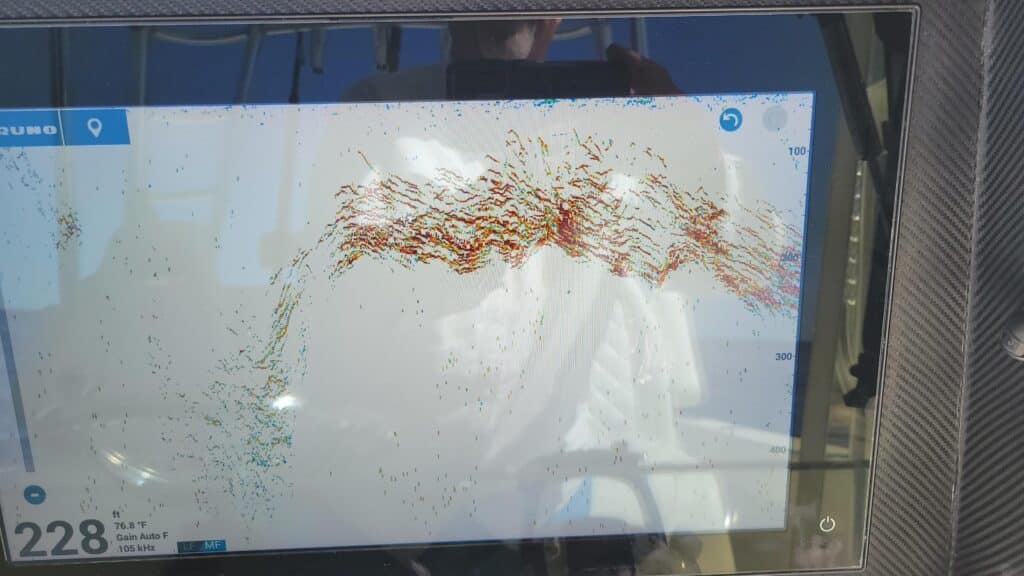
Another tactic that is increasing in popularity is to use metal jigs to punch down to schools of tuna that may be marking but not coming to the top. This works well at our weather buoy 120 miles offshore because it gives a permanent structure for the tuna to gather and feed around. Jigging in this situation can be very productive. Again, most boats are not running 120 miles to target blackfin, but it is a welcome alternative when the yellowfin and dolphin are not waiting for you.
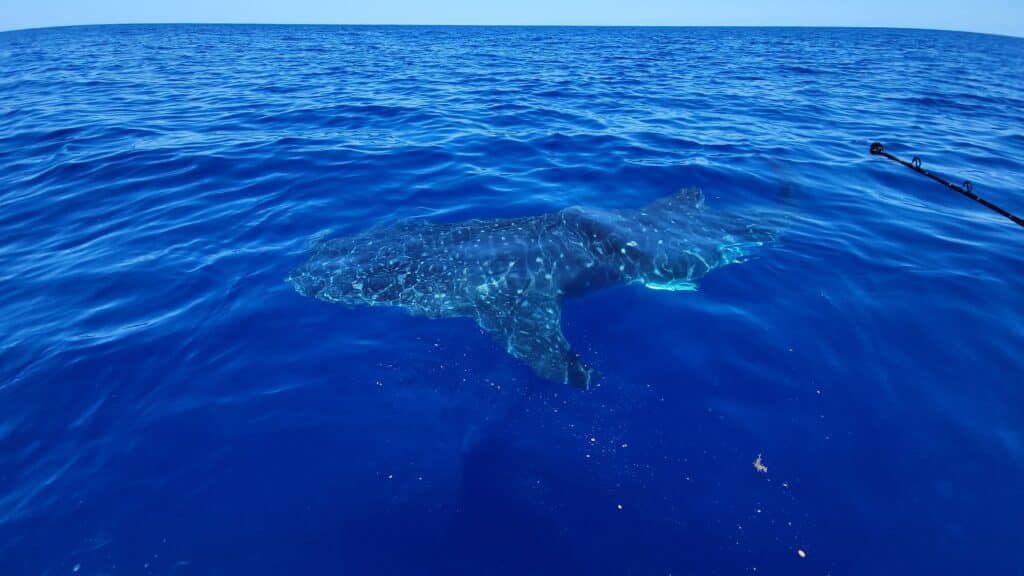
Another example of a jigging opportunity happened last summer when a pack of birds led us to an incredible encounter with a giant whale shark. I’ve seen a fair handful over the years, but this was the biggest and most dramatic because of the purple clear water found 100 miles offshore. It also had the most curious attitude as it came back to the boat a half a dozen times. It came so close we could reach out and touch it. The whale shark was fascinated by something at the transom, and it was huge, even when alongside the 39’ Seavee we were in. Another huge thing was the mark of fish that was following this slow-moving giant. Whale sharks seem to attract their own little ecosystem when they are in deep water. The only bigeye tunas I’ve caught were on whale sharks on the other side of the stream. While we were sharing a moment with a giant, we were also chumming and free lining chunks, trying to entice the marks on the sonar into our fish box.
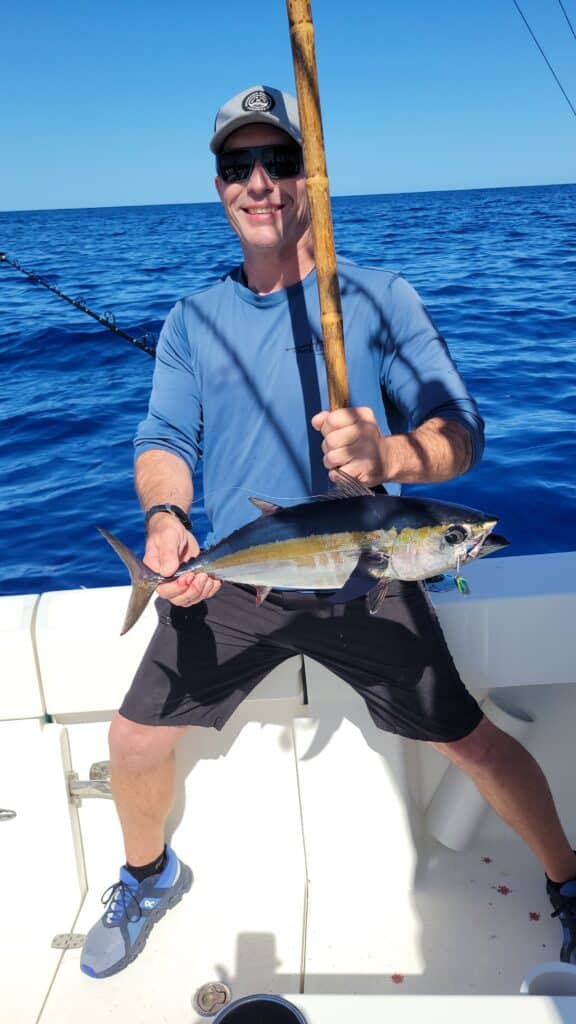
Nothing doing on the bait, so we tied on metal jigs and punched down to depth quickly. Working the jig feverishly over and over, we were amazed that nothing was happening. About that time, wham! The jig rod doubled over, and a smaller blackfin gave us one consolation prize. Again, this is not a common happening or one you can predict, but it is one you can be ready for because the ocean never ceases to amaze.
Of course, in other locations in Florida, like the Humps in the Florida Keys, blackfins are targeted much more frequently, and small feathers and jigs are used to entice, as well as chumming with live bait. Standard trolling in St. Augustine and Jacksonville seems to produce more blackfins than we do here in Central Florida. Techniques always vary greatly with different locations, even in the same state.
Blackfin tuna are great eating, and bleeding them and getting them iced quickly offers subtle improvements in the quality of the meat. Anglers are also using spikes to quickly dispatch the tuna to minimize the buildup of additional lactic acid in the flesh while thrashing or quivering in the boat. However you enjoy preparing tuna, you can’t go wrong with a fresh blackfin tuna that’s been cared for after capture. Of course, like all of the tuna family, the fight and blazing runs are a big part of the thrill and a reason to keep you coming back for more.

